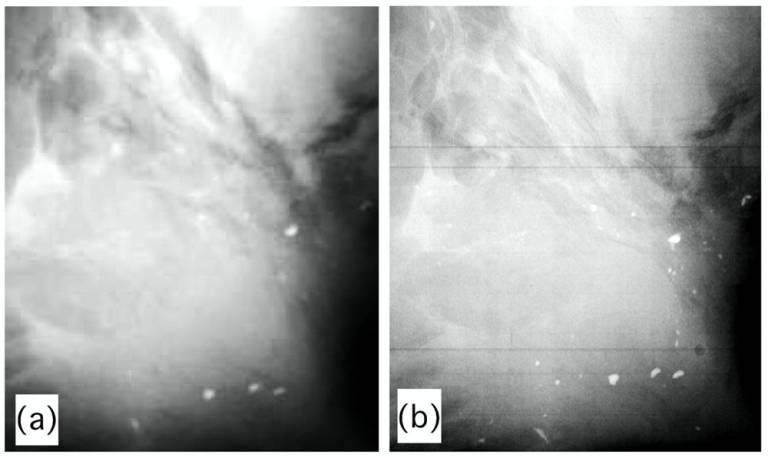Revolutionary X-ray technology developed
13 December 2016
UCL scientists have successfully developed a new X-ray imaging technology that has the potential to benefit society through life-saving applications in security and healthcare.

The new technology excels at determining different shapes and types of matter - a capability that conventional X-rays could only match by using prohibitively high doses of radiation. As such, the researchers say it could be used to identify tumours in living tissue earlier and spot smaller cracks and defects in materials.
The breakthrough is the result of a major five-year international project funded by the Engineering and Physical Sciences Research Council (EPSRC) and led by UCL engineers.
The technique at the heart of the advance is called phase-contrast X-ray imaging. Instead of measuring the extent to which tissue or materials absorb radiation - as in conventional X-ray imaging - it measures the physical effect that passing through different types of tissue or material has on the speed of the X-ray itself.
Professor Alessandro Olivo (UCL Medical Physics & Biomedical Engineering), who led the project, said: "The technique has been around for decades but it's been limited to large-scale synchrotron facilities such as Oxfordshire's Diamond Light Source. We've now advanced this embryonic technology to make it viable for day-to-day use in medicine, security applications, industrial production lines, materials science, non-destructive testing, the archaeology and heritage sector, and a whole range of other fields."
This vast potential for the new technology is already beginning to be explored. For example:
- Under licence, Nikon Metrology UK has incorporated the technology into a prototype security scanner. This is currently being tested and further developed to provide enhanced threat detection against weapons and explosives concealed, for example, in baggage.
- Building on the EPSRC-funded work, a new three-year project supported by Wellcome will see the Nikon Metrology/UCL team develop a prototype scanner for use during breast cancer surgery in collaboration with Barts Health and Queen Mary University of London. The aim is to help surgeons determine the exact extent of the malignancy and to reduce the need to recall patients for further operations, resulting in more effective breast conservation surgery, less need for full mastectomies and more rapid treatment.
- The technology can even detect some tissue types invisible to conventional X-ray machines, such as cartilage, and plans are proceeding to set up a spinout company to take this aspect towards commercialisation.
Professor Olivo, concluded: "This has the potential to be incredibly versatile, game-changing technology. We're currently negotiating with a number of companies to explore how it could be put to practical use. There's really no limit to the benefits this technique could deliver."
Links
- Professor Alessandro Olivo's academic profile
- UCL Medical Physics & Biomedical Engineering
- UCL Engineering
Image
- An image of a breast tumour showing improved visualisation using phase-contrast X-ray imaging (b) compared to traditional methods (a) (credit: Professor Olivo)
Source
Media contact
Bex Caygill
Tel: +44 (0)20 3108 3846
Email: r.caygill [at] ucl.ac.uk
 Close
Close

